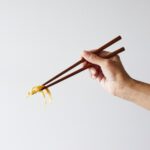Conversion Conundrums: Unveiling the Mysteries of Cups and Liters
In the world of culinary creations and scientific measurements, understanding unit conversions is essential. One common source of confusion lies in the conversion between cups and liters. This article delves into the intricacies of these units, explores their applications, and equips you with the knowledge to confidently navigate between them.
Cups: A Versatile Unit for Everyday Use
The cup, a familiar unit in the kitchen, is not universally standardized. There are two main variations:
- US Customary Cup: This unit, commonly used in the United States, is equal to 16 fluid ounces. It is the standard measurement cup size used in most American cookbooks and recipes.
- Metric Cup: The metric cup, used in some countries and occasionally in scientific contexts, is equal to 250 milliliters (mL). It is important to distinguish between these two types of cups when following recipes or converting measurements.
Liters: The Metric System’s Unit for Volume
The liter (L), a fundamental unit of volume in the metric system, is widely used for scientific measurements and in many countries around the world. It is equal to 1000 milliliters (mL) and roughly equivalent to the volume of a cube of water measuring 10 centimeters on each side.
Conversion Essentials: Making the Math Work
Knowing the basic conversion rates is crucial for navigating between cups and liters:
- 1 US Customary Cup = 0.236588 Liters (L)
- 1 Liter (L) = 4.166667 US Customary Cups
Due to the slight difference between US customary cups and metric cups, conversion accuracy can be improved by specifying the type of cup being used.
Here are some helpful tips for conversion:
- Use a Conversion Calculator: Online conversion calculators or mobile apps can simplify the process and provide accurate results.
- Round for Cooking: In most culinary applications, precise conversions are not essential. Rounding to the nearest quarter or half cup is generally sufficient for successful recipes.
- Invest in Measuring Cups: Having clearly marked measuring cups for both US customary and metric units can save time and prevent conversion errors in the kitchen.
Applications: Cups and Liters in Everyday Life
Cups and liters find application in various aspects of our lives:
- Cooking and Baking: Cups are the preferred unit for measuring ingredients in most American recipes. However, some international recipes may use liters or milliliters.
- Beverages: Soda cans and some juice boxes are often labeled in liters or milliliters.
- Food Labeling: Nutritional information on food labels might use grams (g) or milliliters (mL) for liquid ingredients.
- Scientific Measurements: Liters are the standard unit for measuring liquids in scientific experiments and laboratory settings.
A World of Measurement Systems: Beyond Cups and Liters
The cup and liter are just two units within a vast array of measurement systems used globally. Understanding these systems can be particularly important when traveling or following international recipes.
- Fluid Ounces (fl oz): Another common unit for liquids, particularly in the United States, 1 US cup is equal to 16 fluid ounces.
- Milliliters (mL): A metric unit of volume, 1000 milliliters are equal to 1 liter.
- Gallons (gal): A unit of volume larger than liters, primarily used in the United States for measuring large quantities of liquids.
Beyond the Basics: Exploring Conversions in the Kitchen
Equipping yourself with conversion knowledge is just the first step. Here’s a deeper dive into navigating recipe conversions and conquering culinary challenges:
Recipe Sleuthing: Identifying Measurement Systems
The first step to successful conversion is identifying the measurement system used in a recipe. Look for clues like:
- Origin of the Recipe: Recipes from the United States or Canada typically use US customary cups, while those from Europe or other metric-using countries will likely use liters or milliliters.
- Ingredient Quantities: Large quantities like 500 mL or 2 liters often indicate a metric recipe.
- Online Conversions: Many recipe websites offer built-in conversion tools or suggest alternative measurements alongside the original units.
Tools of the Trade: Equipping Your Kitchen
Having the right tools at your disposal streamlines the conversion process:
- Dual-Labeled Measuring Cups: Invest in measuring cups with both US customary and metric markings for quick reference.
- Digital Kitchen Scale: A digital scale offers the most precise measurement conversion, especially for dry ingredients like flour and sugar. Most scales allow you to switch between grams (g), ounces (oz), and milliliters (mL).
- Conversion Charts: Keep a handy conversion chart posted in your kitchen for easy reference during recipe conversions.
Beyond Cups and Liters: Common Conversion Challenges
Recipes often call for ingredients measured in units beyond cups and liters. Here’s how to tackle these conversions:
- Dry Ingredients: Flour, sugar, and other dry ingredients are often measured in cups or grams (g). A kitchen scale is ideal for converting between these units. For example, 1 cup of all-purpose flour is approximately equal to 120 grams.
- Ounces (oz): Fluid ounces (fl oz) are another common unit for liquids, particularly in US recipes. Remember, 1 US cup is equal to 16 fl oz.
- Tablespoons (tbsp) and Teaspoons (tsp): These smaller units are used for measuring precise amounts of liquids and some dry ingredients. Conversion charts or online resources can be helpful for these.
Recipe Adjustments: When Conversion Isn’t Perfect
While conversions aim for accuracy, slight adjustments might be necessary depending on the recipe.
- Baking Conversions: Baking, especially with delicate pastries, can be sensitive to precise measurements. When converting between cups and grams for dry ingredients, consider rounding down slightly to avoid a dense final product.
- Liquids: Conversions for liquids are generally more forgiving. Rounding to the nearest quarter cup or using a slightly smaller measuring cup for metric conversions can ensure successful results.
Embrace the Challenge: The Joys of Recipe Exploration
Recipe conversions can be an opportunity to explore new culinary traditions and expand your cooking repertoire. Don’t be afraid to experiment, adjust measurements as needed, and celebrate the unique flavors from around the world. With a little practice and the knowledge you’ve gained, you’ll be a conversion whiz and a culinary adventurer in no time!
FAQ: Cups and Liters
- How many cups are in a liter? There are approximately 4.16 US customary cups in 1 liter.
- How many liters are in a cup? There are approximately 0.24 liters in 1 US customary cup.
- What is the difference between a US customary cup and a metric cup? A US customary cup is equal to 16 fluid ounces, while a metric cup is equal to 250 milliliters.
- When to use cups and when to use liters? Cups are typically used in US recipes, while liters are the standard unit for liquids in the metric system and scientific measurements.
- How can I accurately convert between cups and liters? Use a conversion calculator or online resources for precise conversions. Rounding to the nearest quarter or half cup is sufficient for most cooking purposes.
Conclusion: A Measured Approach
Understanding the nuances of cups and liters empowers you to navigate recipes, interpret food labels, and confidently tackle conversions in the kitchen and beyond. With a little practice and the knowledge provided here, you’ll be a measurement maestro.



